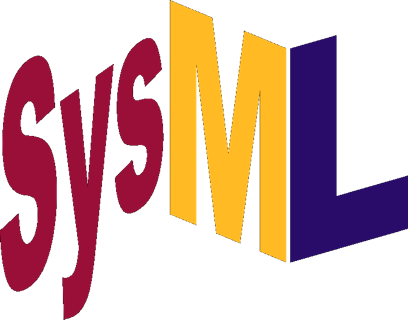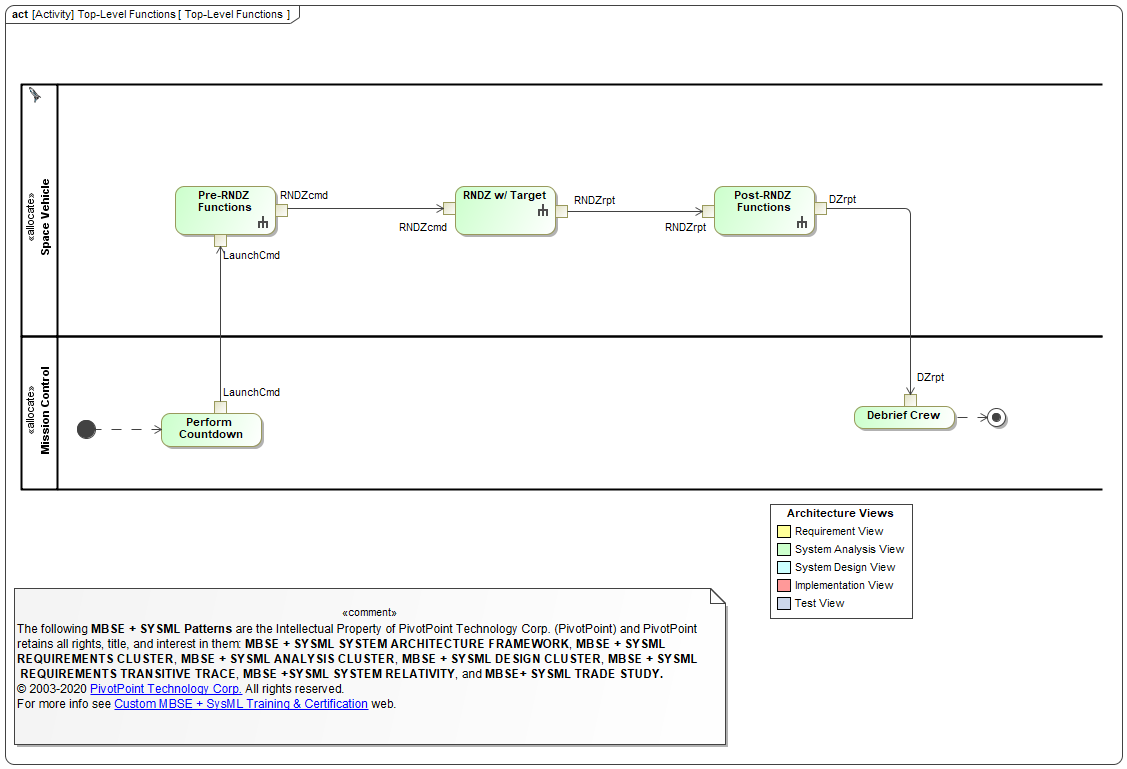SysML FAQ: What is an Activity diagram (ACT) and how is it used?
What is a SysML Activity diagram?
Definitions
Activity: An Activity (notation: rounded-rectangle or "roundangle") represents a flow of functional behaviors that may include optional Object (data) Flows. Control and Object Flows can be sequential (default) or parallel (indicated by Fork & Join Nodes) depending upon conditions.
- Action = atomic Activity, which is a primitive executable behavior.
- Control Flow = flow of functional behaviors
- Object Flow = data flow of object inputs/outputs into/from an Activity or Action.
Activity diagram (act): An Activity diagram shows system dynamic behavior using a combined Control Flow and Object (data) Flow model.
- Activities (and indirectly Activity diagrams) can be recursively decomposed ("nested") by alternating between Activity definitions and Call Behavior Action usages (See Usage Notes below.)
- Activities and Actions can be Allocated via Partitions that represent Control Blocks (i.e., Blocks that represent the System, Subsystems, Sub-Subsystems, ..., atomic structures);
- Data Blocks (i.e., Blocks that represent Persistent Data Stores) and Signals that contain Data Blocks can be Allocated to Activity Parameters and Action Pins;
- compare and contrast: SA/SD DFDs, FFBDs, EFFBDs,IDEF0; BPMN BPDs.
Purpose
The purpose of Activity diagrams is to specify dynamic system behaviors that Satisfy («satisfy» Dependency) system Functional Requirements using both Control and Object (data) Flows. When properly applied (See Usage Notes below), Activity diagrams are recursively scalable and simulatable.
Diagram Properties
| Diagram Name | Diagram Type | UML 2 Analog | SDLC Usage | Essential AGILE SYSML? |
Dynamic Sim † |
Math Sim ‡ |
Auto Code Gen |
Rigor | Semi | Informal |
|---|---|---|---|---|---|---|---|---|---|---|
| Activity diagram (act) | Dynamic Behavior [Simulatable] |
Activity [minor mods] |
System Analysis, Functional Analysis, System Design |
|||||||
Usage Notes
| BEST PRACTICE PATTERNS | ANTI-PATTERNS |
|---|---|
| * Recursively decompose ("nest") Activities by alternating between Activity definitions and Call Behavior usages. | * Bloctivity Anti-Pattern = Conflate Block and Activity syntax and semantics. |
| * Allocate all Activities and Actions to a Partition that represents a Control Block. | * SMactivity Anti-Pattern = Conflate State Machine and Activity syntax and semantics. |
| * Allocate Data Blocks or Signals to all Activity Parameters and Action Pins. | |
| * Ensure that all Activities Satisfy at least one Functional Requirement. |
UML, BPMN, OMG SYSML and UPDM are trademarks of the Object Management Group.
TOGAF and ARCHIMATE are trademarks of The Open Group.
ENTERPRISE ARCHITECT is a trademark of Sparx Systems Pty Ltd. MAGICDRAW and CAMEO are trademarks of No Magic, Inc. RATIONAL RHAPSODY is a trademark of IBM.
All other trademarks are the property of their respective owners.
© 2003-2024 PivotPoint Technology Corp. | Terms of Use | Privacy | Contact Us




